Middle-age muscle loss is real and why hitting 40 means upping your protein game
Chances are, you're not eating enough protein in your middle-age years to slow down age-related, muscle-wasting sarcopenia. But how much protein is enough and can you rely on protein powders and protein-enhanced foods?
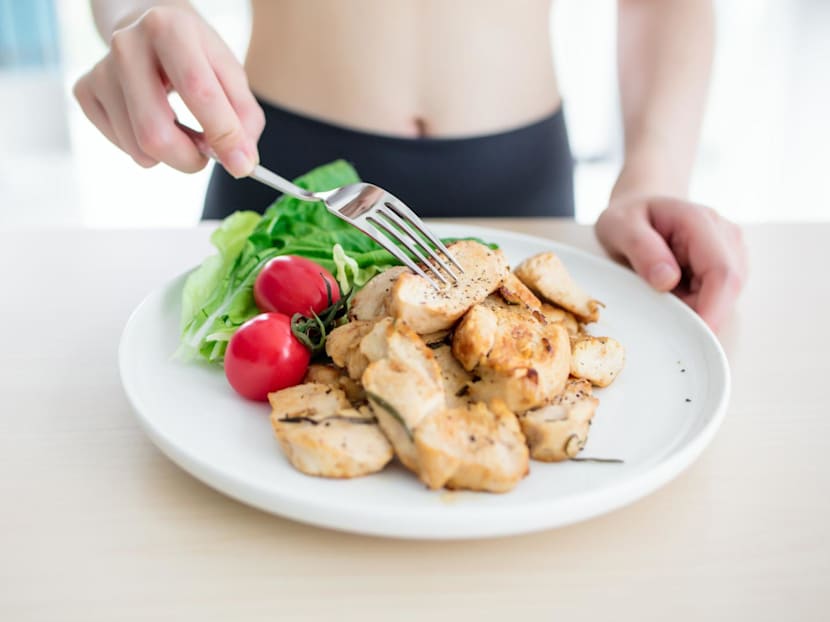
(Photo: iStock/Istockexstock)

This audio is generated by an AI tool.
You’ve read that you need more muscle-building protein in your diet as you get older. But why and how much counts as more?
After all, isn’t there already protein in the chicken rice, char siew rice, beef rendang and the various guises of meat in the mala hotpot that you so love? Even kaya toast comes with a side of soft-boiled eggs – surely a decent source of protein? And it’s not like you’re training to be a bodybuilder or an elite athlete.
That’s because you need the extra protein to slow down the age-related, muscle-wasting condition called sarcopenia. According to Harvard Health, after age 30, you’re already beginning to lose as much as 3 per cent to 5 per cent of your muscle mass every 10 years. After age 50, your muscle mass declines at an annual rate of 1 per cent to 2 per cent, and 3 per cent per year in your 60s thereafter.
“Muscle strength and function declines three to five times more for every 1 per cent of lost muscle mass,” said Jerome Lim, a physiotherapist at Orchard Health Clinic. “Now, that is scary because if you lost 8 per cent of your muscle mass for 10 years, you could lose up to 40 per cent of your muscle strength and function.”
The signs of sarcopenia begin innocuously enough. You find yourself grunting and exerting more just to get up from the chair or climb the stairs. You struggle to keep up with your younger colleagues on a coffee run – and not an actual run. Even opening a jar becomes a challenge. And let’s not get started on the year-on-year weight gain.
What is this middle-age curse, you wonder, as you lose your footing again while on a moving MRT. You used to be able to maintain your balance without touching the train’s grab poles or straps. Has the life of a mobility scooter, falls and broken hip chosen you? And how does eating more protein now help?
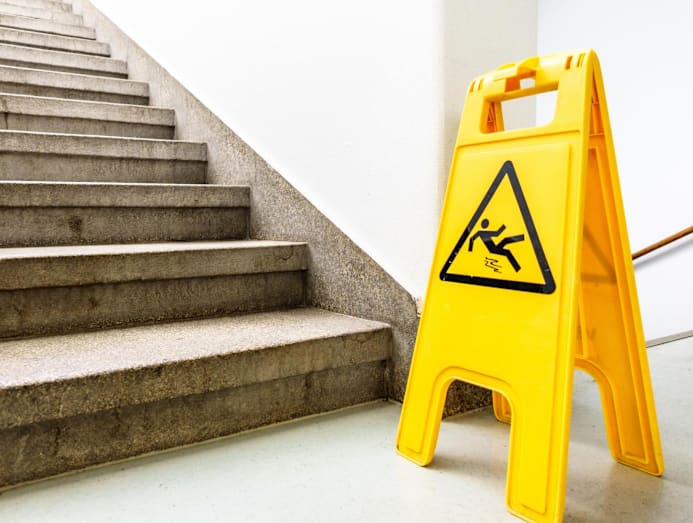
WHAT EXACTLY IS SARCOPENIA?
“Sarcopenia is the age-related loss of muscle mass, strength and/or physical performance, which can lead to weakness, slower mobility, metabolic problems and increased risk of falls,” explained Associate Professor Reshma Merchant, the head and a senior consultant with National University Hospital’s Division of Geriatric Medicine, Department of Medicine.
The muscle loss that Assoc Prof Merchant referred to affects your skeletal muscle, the type of muscle that attaches to the bones and is responsible for movement and posture – or letting you catch the bus and preventing you from tripping when you miss a step. (There are two other primary types of muscles: Cardiac muscle in the heart and smooth muscle that line the walls of internal organs such as the intestines and blood vessels.)
“Skeletal muscle is the largest endocrine organ in the body, comprising about 40 per cent of our body mass,” said Assoc Prof Merchant. This means that losing your skeletal muscle can affect your basal metabolic rate (how many calories you burn at rest), insulin sensitivity and how effectively your body uses glucose. In other words, muscle loss is not just about movement and balance but also the middle-age spread and metabolically linked diseases such as diabetes, cardiovascular disease and fatty liver.
Much like your bones, your skeletal muscle is constantly broken down and rebuilt. In fact, it undergoes protein turnover at roughly 1.5 per cent each day, according to Assoc Prof Merchant. Muscle loss occurs when muscle protein breakdown (MPB) consistently exceeds muscle protein synthesis (MPS), leading to sarcopenia.
All is well and good in your younger days when your body is able to keep muscle protein synthesis ahead of muscle protein breakdown.
But with age comes a stumbling block in the form of anabolic resistance. This is when “the body shows a blunted MPS response to protein intake and regular exercise, making it harder to gain or maintain muscle mass”, explained Assoc Prof Merchant. In men, anabolic resistance commonly emerges between mid-40s and early 50s; in women, during perimenopause, she added.
WHY SHOULD YOU BE CONCERNED ABOUT SARCOPENIA?
You want to reduce your risk of falling in your senior years, which is the top factor for admission at the A&E among geriatric patients, said Lim. What are very likely to result are fractures of the spine, wrist, elbow and particularly hip, as well as head injuries, reduced mobility and long-term admissions, he said.
Fear from a previous fall can also lead to anxiety, self-imposed activity restriction, social isolation, depression and a reduced quality of life, Lim pointed out. "Eventually, the senior becomes inactive, resulting in even weaker muscles and a never-ending cycle of recurrent falls."
Lim said: "It is always easier to maintain muscle function than trying to get back it back after it's lost". Physiological changes that occur with age can also limit the effectiveness of your fitness training programme, reminded Lim. "These include a slower metabolism, hormonal changes, reduced flexibility, decreased coordination and reflexes, as well as diminished nerve function – all of which can contribute to slower recovery and lower peak heart rates."
But all is not lost for seniors. "Many studies have indicated that the potential to regain muscle is not lost, even in old age, when the training programme is appropriate," said Lim. "Some research even shows no significant difference in muscle mass gain between young and older adults as long as they follow a consistent regime at a moderate intensity."
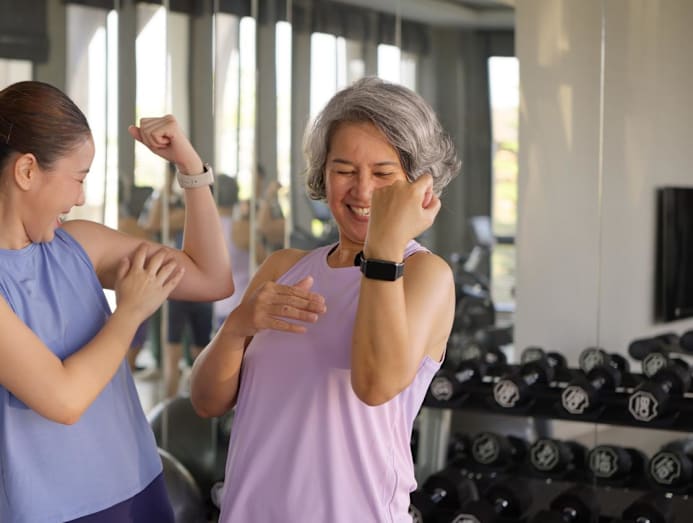
HOW DO YOU TELL IF YOU ALREADY HAVE SOME MUSCLE LOSS?
There are two tests you can try at home, suggested Lim. First, walk at your usual pace for 6m and time your speed. “If your habitual walking speed is less than 1m per second, it indicates low physical performance and is considered a significant indicator of sarcopenia,” he said.
Next, the sit-stand test to assess your leg strength. Sit in a chair with your knees bent at 90 degrees and hands crossed at your chest. Stand up without any assistance and sit down five times as quickly as possible. If you can’t complete that within 10 seconds, it indicates low muscle strength and sarcopenia, said Lim.
Lim highlighted three components in muscle strength that are essential for your everyday movements: Control, tolerance and power. Control refers to your muscles’ ability to contract at will; tolerance is your muscles’ ability to sustain that contraction; and power is the speed at which your muscles can contract and generate a force.
Together, these three components affect your movement and balance. “We need to coordinate various core and leg muscles with sufficient control and tolerance to maintain our balance in different postures – be it standing, squatting or sitting – and with duration,” said Lim. How fast your muscles are able to react to maintain that coordination is power, he said.
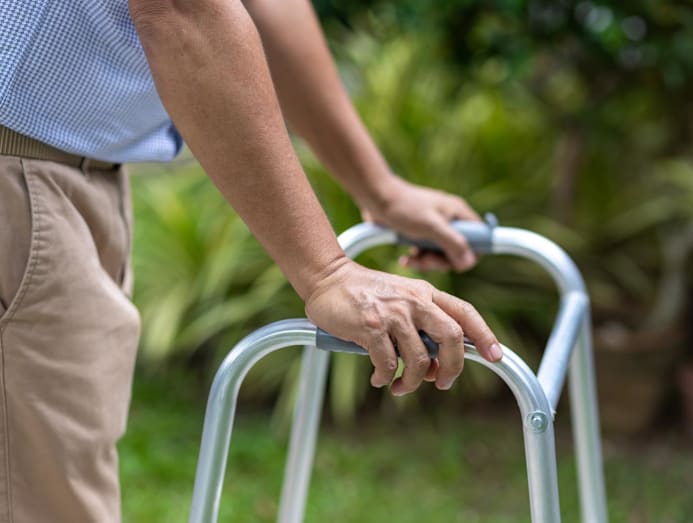
CAN YOU JUST EAT MORE PROTEIN AND SKIP EXERCISE?
Sorry but no. “When we eat protein, our body breaks it down into amino acids, which travel through the bloodstream to the muscles,” explained Assoc Prof Merchant. “With the help of insulin, these amino acids enter the muscle cells, where they are used to create new muscle proteins.”
But “without the micro-tears and stress caused by exercise (especially resistance or strength training), your body has little reason to direct the protein consumed toward muscle repair and growth”, she said.
In addition, “exercise triggers important hormonal responses, such as the release of growth hormone and testosterone, which create a more favourable environment for building and maintaining muscle,” added Assoc Prof Merchant. “Without this hormonal boost, the effectiveness of protein alone is limited.”
Furthermore, the extra chicken breast, Greek yogurt and eggs you’re chowing down could lead to weight gain if you don’t exercise. “While protein is essential, the body can only use a certain amount for muscle repair and synthesis,” said Assoc Prof Merchant. “If there’s no demand from exercise, the excess protein may be converted to energy or stored as fat instead of being used to maintain or build muscle.”
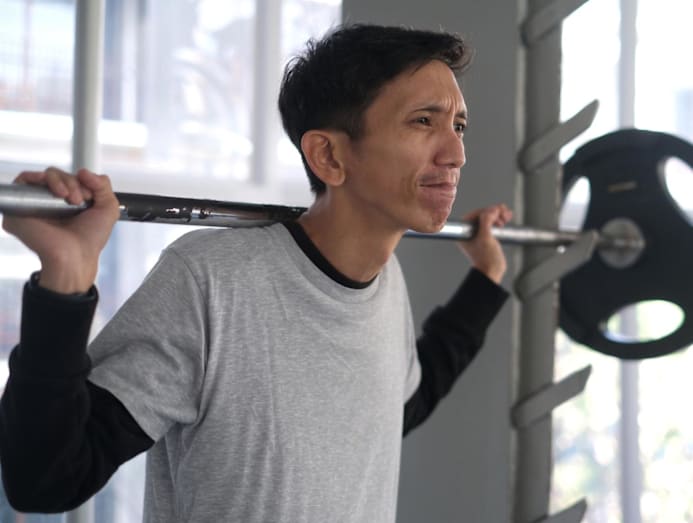
HOW MUCH MORE PROTEIN DO YOU NEED AS A MIDDLE-AGER?
You may have read that the recommended dietary allowance or RDA is 0.8g of protein per kilogram of body weight (0.8g/kg) per day. So, if you weigh 70kg, you’ll need about 56g of protein daily or two palm-sized portions of lean meat, fish, tofu or nuts.
However, that amount “is not optimal for preserving muscle mass or preventing sarcopenia, especially during middle age when muscle loss begins gradually”, said Assoc Prof Merchant. “Research shows that middle-aged and older adults benefit from a higher protein intake, typically around 1g/kg to 1.2g/kg each day.”
Without the micro-tears and stress caused by exercise, your body has little reason to direct the protein consumed toward muscle repair and growth.
That’s at least 70g of protein each day to support muscle health. If you translate that requirement into food choices, it could be two eggs (8g protein), 100g chicken breast (30g protein), 100g salmon (20g protein) and 170g Greek yogurt (17g protein).
Fabio Comana, an exercise physiologist from University of California San Diego and San Diego State University, also agreed that you need more than what the RDA recommends – and more so as you get older. He recommended about 1.6g/kg to 2g/kg daily to be adjusted accordingly for resistance training or weight loss.
“Our physiology requires protein on a regular basis. Unlike carbs and fats, we don’t store protein efficiently. Most of it is tied up in muscle tissues, with very little in reserve,” he said at The Strength Summit in Singapore in August.
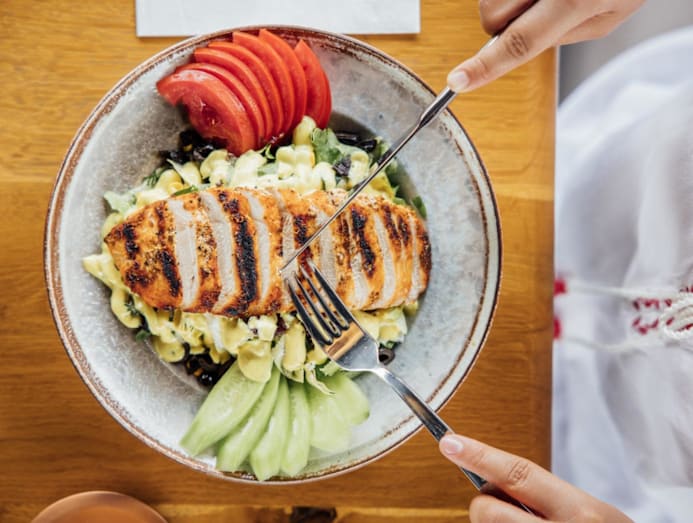
Spacing out your protein intake throughout the day is also important. “Taking 20g of protein every three hours produced more muscle protein synthesis than 10g every 90 minutes, or 40g twice a day," said Comana. "The takeaway? Spreading your protein intake across multiple meals, rather than mega-dosing, is more effective.”
Assoc Prof Merchant suggested about 25g to 30g of protein per meal to “maximise muscle protein synthesis”. “This pattern ensures a steady supply of amino acids to muscles throughout the day, which is key for maintaining muscle strength and function as we age.”
CAN YOU CONSUME TOO MUCH PROTEIN? WHAT KIND OF PROTEIN SHOULD YOU GO FOR?
An excess of the macronutrient is known to strain the kidneys, cause kidney stones and leach calcium from the bones.
However, Comana isn’t too concerned. “Worries about protein harming the kidneys or depleting calcium levels aren’t supported by strong evidence,” he said, claiming that healthy adults can up their protein intake to 2g/kg daily. “In patients with kidney disease, protein restriction should, of course, always be managed by a physician or dietitian,” he emphasised.
What Comana is more interested in is this protein paradox: “Plant-based protein can improve cardiovascular outcomes and reduce inflammation," he said. But at the same time, “animal-based protein – especially whey and other dairy products – score higher in absorption rates and support muscle preservation better”.
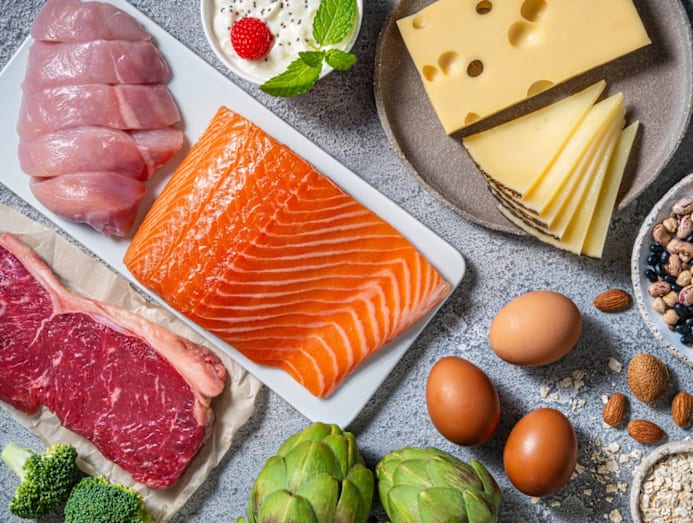
Jaclyn Reutens, a clinical and sports dietitian with Aptima Nutrition And Sports Consultants, explained that the reason for plant-based protein’s low bioavailability is that they contain “indigestible fibres, oxalates, phytoestrogens, tannins and other compounds that interfere with absorption”.
“These are not bad compounds; they are highly nutritious but they do reduce the protein bioavailability in plant-based proteins," she said. "That being said, we should still eat a combination of plant and animal-based proteins to reap the nutritional benefits of both types.”
If you’re vegetarian or lactose intolerant, soy protein is the preferred plant protein, said Reutens, as it contains all the nine essential amino acids as well as heart-healthy phytoestrogens.
Plant-based protein contains indigestible fibres, oxalates, phytoestrogens and tannins that interfere with absorption. But these compounds are also highly nutritious.
Other plant-based options worth considering include pea, brown rice and seed proteins, suggested Assoc Prof Merchant.
“Pea protein is highly digestible, hypoallergenic and has a good but incomplete amino acid profile, so combining it with brown rice protein can help create a full amino acid profile. Brown rice protein and seed proteins are useful for blends but are generally less balanced in amino acids and may have stronger flavours that affect palatability,” she said.
Meanwhile, Comana’s take is to bank on more plant protein in mid-life to support long-term health. “In older age, animal proteins may be more important for functionality and preventing frailty.”
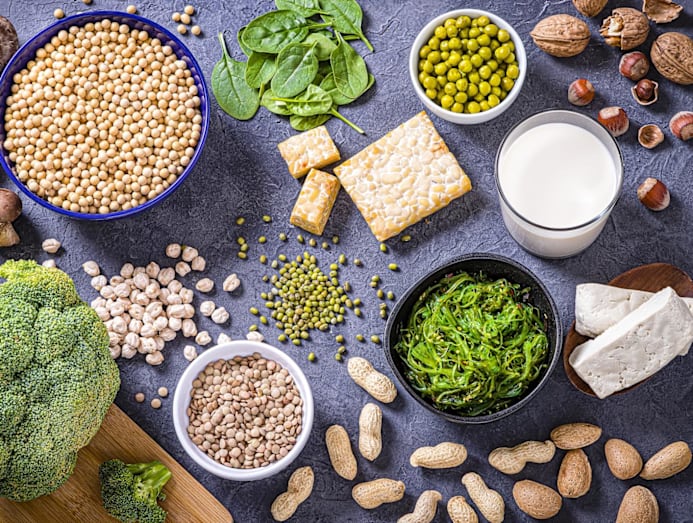
WHAT ABOUT THOSE “HIGH PROTEIN” GREEK YOGURT AND MILK YOU SEE IN SUPERMARKETS?
“They do contain more protein, otherwise they can’t make that claim,” said Reutens. “To qualify as ‘high in protein’, the item must provide more than or equal to 10g of protein in each serving it recommends. And the protein content of the food must contribute at least 20 per cent of its calorie yield.”
As convenient as high-protein foods are, Reutens cautioned against relying on them solely. "Protein-enhanced foods may not contain much of anything else, and can also contain hidden saturated fat and refined sugars."
WHAT ABOUT EGGS? WHAT'S THE FINAL WORD ON THEM?
Eggs are a double-edged sword. On one hand, they’re an excellent and affordable source of protein, about 3g to 4g of protein per egg, said Reutens. On the other, they can be little cholesterol bombs.
You can have as many egg whites as you like a day but when it comes to yolks, limit it to one a day to prevent the overconsumption of cholesterol, said Reutens. “It is okay to have two egg yolks a day on some days but keep it to seven yolks a week.”
It also depends on what your current cholesterol levels are. “To know your personal limit, check with your dietitian or cardiologist,” said Reutens.
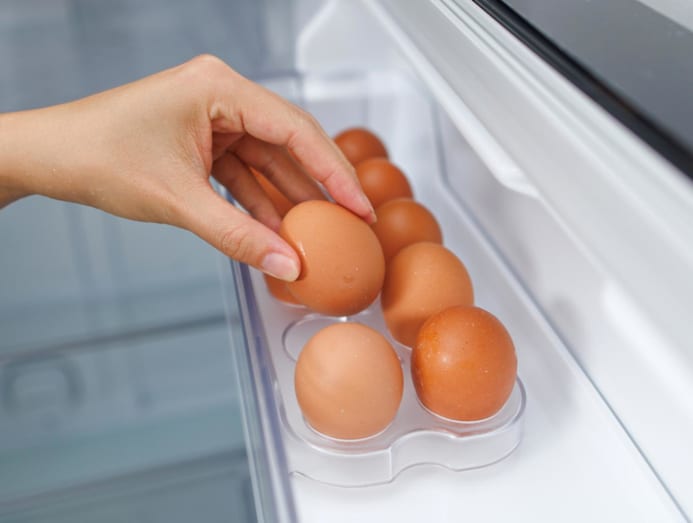
DO YOU HAVE TO TAKE PROTEIN POWDERS?
You're better off sticking to protein-rich, natural foods, said Reutens. “You should only consider protein powders if you can't meet your daily protein requirements through food. Or if your workouts are so intense, you need a quick and convenient protein boost.”
Protein powders, though convenient, aren’t a panacea. “What’s not listed are the heavy metals that protein powders may contain such as lead, mercury, arsenic and cadmium,” said Reutens. “Therefore, protein powders are not superior to natural foods.”
She added that “generally, these heavy metals are not listed". "That’s why it’s important to look for products that have gone through third-party testing. Some laboratories have shown that vanilla-flavoured protein powders tend to have less cadmium and lead”.
And that’s in addition to the usual suspects to look out for, including added sugars, artificial sweeteners and unnecessary fillers. “Choose products made with simple, natural ingredients,” said Assoc Prof Merchant. “Verify the protein content per serving to ensure it aligns with your dietary needs.
WHICH PROTEIN POWDER SUITS YOUR NEEDS?
From whey to hydrolysate, here’s how they measure up, according to Associate Professor Reshma Merchant from National University Hospital’s Division of Geriatric Medicine, Department of Medicine and Jaclyn Reutens, Aptima Nutrition And Sports Consultants’ dietitian:
Whey: Lactose-intolerant and lunchtime gym-goers
It is derived from milk during the cheese-making process, where the liquid that separates from the curds is filtered and concentrated. Whey is a low-lactose milk protein that’s quickly absorbed. It is best taken just before or after exercise – making it perfect after a quick lunchtime workout when you don’t have time to sit down for a proper meal.
Casein: Those who do intermittent fasting
Like whey, casein is a complete protein containing all nine essential amino acids but it digests way slower. This slow-release milk protein works to an advantage for those who do overnight fasting (going without food and drink for 10 to 14 hours) as it prevents your body from breaking down your own muscle tissues and helps to boost muscle growth overnight.
Concentrate: Those who want to stay full longer
It typically contains 70 to 80 per cent protein by weight, with the remainder consisting of fats, carbohydrates and minerals. Because they are less processed and still contain some fats, carbohydrates and lactose, concentrates taste richer and creamier. Concentrates are also more nutrient-dense and keep you fuller longer.
Isolate: Lactose-intolerant individuals
Isolates are even more refined than concentrates, containing 90 to 95 per cent protein by weight with minimal fats, carbohydrates and lactose. Extra filtration has removed the lactose, so it’s ideal for those who are lactose intolerant. It is also more expensive.
Hydrolysate: High-performance athletes and patients with digestion issues
Hydrolysed protein has the highest absorption rate. It is for those who need quick recovery as well as patients with medical conditions such as allergies, digestive issues, chronic liver disease, and the elderly and infants with compromised digestion.
CAN PROTEIN POWDER REPLACE A MEAL?
In a word, no. “A protein powder cannot replace a meal as a meal needs to be complete with carbohydrates, fats, vitamin, minerals and dietary fibre,” said Reutens.
Moreover, “protein powders do put a strain on your kidneys and liver”, she cautioned, and you should always drink a lot of water to reduce the occurrence of kidney stones.
What if you don’t have time to grab a post-workout lunch and that protein shake is looking super convenient to you? How often can you get away with that? “Considering that most people do a lunch workout every other day, two to three days a week is acceptable,” said Reutens.
“But plan to have a small carb-y snack a few hours later, perhaps during an afternoon tea break,” she suggested. It can be a plain bun, pau or banana to prevent you from feeling ravenous at dinner that can lead to overeating, she said. “The hunger after a solid workout will catch up on you. You can also plan to eat more at breakfast on your gym days.”
Still, reiterated Reutens, it is best to get your protein from food sources as there are other nutrients in them. “For example, a chicken breast has protein, along with B vitamins and zinc. If you get all your protein from powders, you will be missing out on a big portion of nutrients.”
She added that "protein is essential but it is not everything". "Figure out your individual needs for each macronutrient and plan a well-balanced diet. Consult a dietitian if you need a personalised diet."






